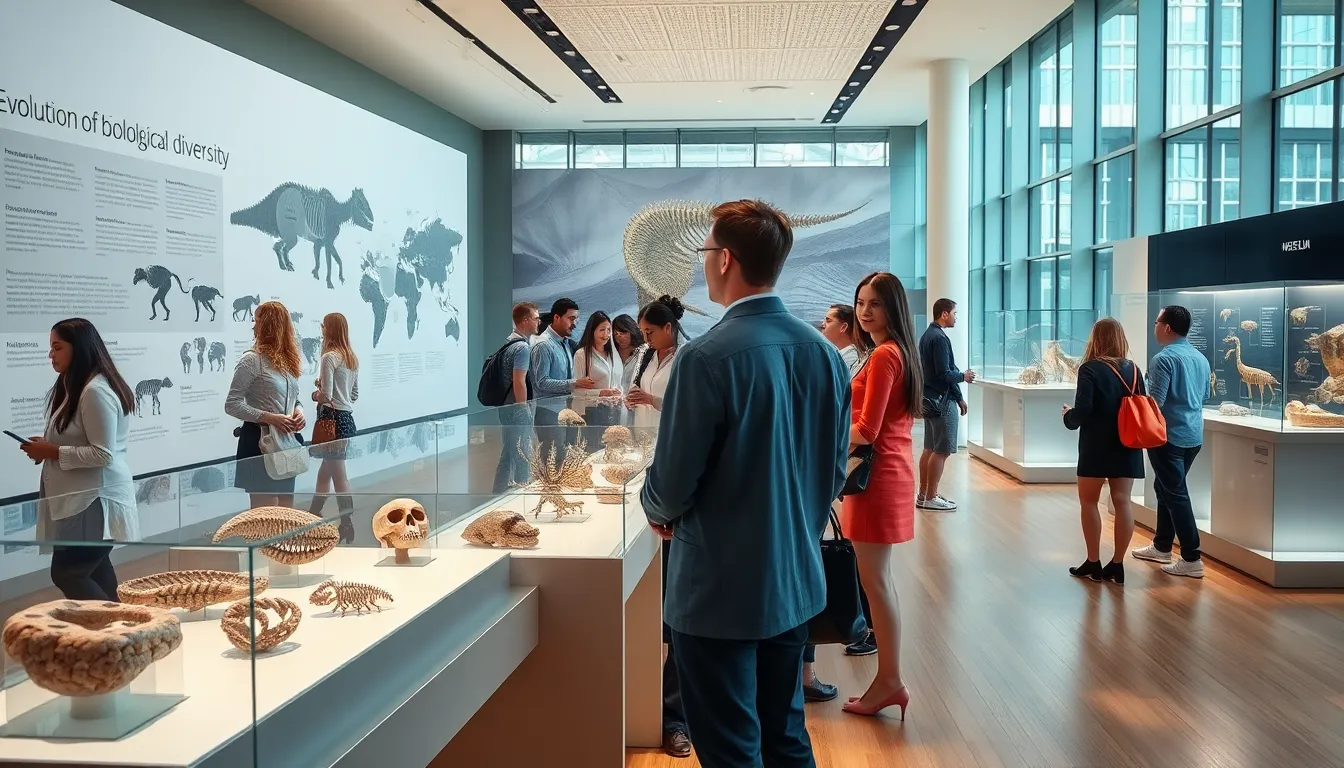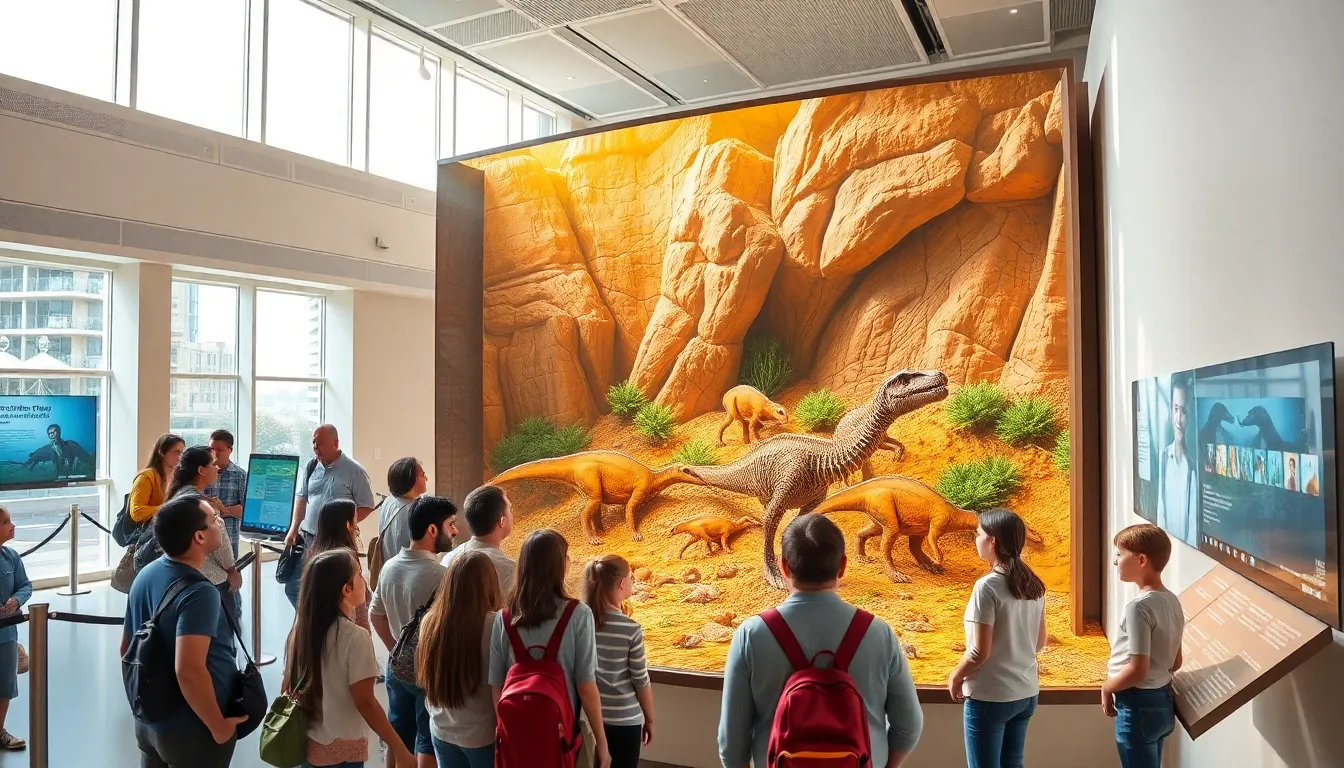Have you ever walked into a life science museum and felt like you just stepped into a time machine? From ancient fossils to cutting-edge genetic research, these places are like the box of chocolates you never knew you needed, each display a delightful surprise that opens your mind to the wonders of evolution. In this text, we’ll dive deep into the evolution of life science museums, exploring their rich history, the impact of modern technology, and the thrilling exhibits that keep us coming back for more. So, fasten your seatbelt: it’s going to be an educational ride.
Table of Contents
ToggleThe Historical Context of Life Science Museums

Life science museums have a unique story that spans centuries, tracing their origins back to the age of exploration and scientific discovery. In the early days, naturalists and scientists would collect specimens from all corners of the globe, stashing them in cabinets or displaying them haphazardly in universities.
The emergence of formal museums didn’t begin until the 18th century when institutions like the British Museum opened their doors. This marked a monumental shift, as the focus transitioned from individual collectors to public education. The intent was clear: to make scientific knowledge accessible to everyone, not just a select few. Fast forward to the 19th century, and you see the establishment of specialized natural history museums, where life sciences began to take center stage. They became a haven for curious minds, providing a detailed look at biological evolution, anatomy, and ecological relationships.
Over time, these establishments evolved, adapting to societal changes and advancements in science. The advent of Darwin’s theory of evolution in the mid-19th century further cemented the role of these museums, as they became vital spaces for illuminating the complexities of life on Earth.
Key Milestones in the Development of Life Science Museums
Key milestones have punctuated the development of life science museums over the years, with each step marking a significant shift in how we interact with science. The introduction of dioramas in the late 19th century illustrated ecosystems and biodiversity in captivating ways, capturing the imagination of visitors and enriching their understanding of natural histories.
In the 20th century, technological advancements transformed exhibition techniques. Three-dimensional displays and interactive models became popular, encouraging hands-on learning. One noteworthy example is the iconic American Museum of Natural History, which during this time revolutionized its exhibits by integrating immersive experiences centered around evolution and biodiversity.
Also, the late 20th century saw a rise in the focus on sustainability and ecology. Museums began incorporating this perspective into their narratives, addressing contemporary issues like climate change. This evolution was crucial, as it underscored the museum’s role not just as educators but as advocates for protecting the planet.
Today, life science museums are not merely repositories of artifacts but active participants in ongoing conversations about science and society.
The Role of Technology in Modern Life Science Museums
Technology has become the lifeblood of modern life science museums, creating new avenues for engagement and learning. Interactive screens, augmented reality (AR), and virtual reality (VR) are just a few examples of how museums are harnessing innovation to captivate audiences. With AR, visitors can explore prehistoric landscapes or watch ecosystems unfold in real-time, breaking the confines of traditional exhibits.
Besides, data visualization has become essential in communicating complex scientific concepts. Infographics and dynamic displays allow patrons to grasp intricate information at a glance. With the rise of mobile applications, visitors can now access additional layers of information as they navigate the museum, personalizing their journey through science.
More importantly, technology facilitates global collaborations. Institutions can share resources and knowledge remotely, bridging gaps between museums worldwide, enhancing the educational experience profoundly. This interconnectedness nurtures a broader understanding of life sciences across different cultures and regions.
Exhibits That Transform the Visitor Experience
Exhibits today are more than just displays: they’re experiences that resonate on a personal level with visitors. Themed exhibits often revolve around current scientific research or pressing environmental issues, weaving storytelling into the fabric of science.
For instance, the dazzling ‘Living Planet’ exhibit showcases interactive installations that dive deep into the inner workings of ecosystems, sparking curiosity about biodiversity. Each interactive component engages the audience, encouraging them to think critically about their impact on the environment.
Also, many museums are incorporating community engagement in their exhibits. Local scientists and environmentalists participate in collaborative projects, ensuring that the content reflects community interests and concerns. This approach not only educates but also strengthens the bond between the museum and the community it serves, creating a shared ownership of knowledge.
Challenges Facing Life Science Museums Today
Even though their many successes, life science museums face significant challenges today. One primary concern is funding. As public interest shifts and digital resources proliferate, securing financial support for brick-and-mortar spaces becomes tough. Many museums are forced to compete intensely for funding, often leading to reduced budgets for exhibitions and educational programs.
Also, the pandemic has been a major game-changer. Visitor numbers dropped drastically, prompting museums to rethink their strategies for engaging audiences. Health and safety concerns compelled many institutions to invest heavily in sanitization and online platforms, reshaping how they deliver content.
Finally, as new scientific discoveries emerge rapidly, museums must stay current or risk becoming obsolete. This ongoing need for adaptation requires constant investment in professional development to ensure that staff can provide updated, accurate information to the public.
Future Trends in Life Science Museums
The future of life science museums appears bright, reflecting the myriad of trends shaping their direction. One notable trend is the increasing emphasis on inclusivity, making these spaces accessible to all. Museums are actively working to ensure that their exhibits cater to diverse audiences, offering multilingual information, sensory-friendly environments, and programs aimed at underserved communities.
Plus, the focus on sustainability is set to grow more pronounced. As global issues like climate change gain center stage, museums will likely curate exhibits that promote awareness and inspire action. They may also adopt green practices within their operations, emphasizing their commitment to environmental stewardship.
Finally, educational programming that combines informal and formal education is on the rise. Collaborations with schools and universities will enable museums to serve as dynamic extensions of traditional learning environments.



